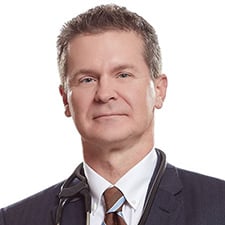It has become a rite of spring: Every year, bills seeking to inappropriately expand scope of practice for physician assistants (PAs), nurse practitioners and other nonphysician health professionals are introduced in state legislatures around the country.
Legislation has been introduced in about a dozen states to amend PA practice requirements, including amendments to or removal of provisions requiring physician supervision or collaboration. This includes bills in Colorado and Montana that were approved by the legislature, and active legislation in Illinois, Indiana, Maryland, New York, and Tennessee.
Another bill, SB 175 in South Dakota, was introduced in January that would have allowed PAs to practice medicine—including diagnosing and treating patients, ordering and performing x-rays and other diagnostic testing and prescribing controlled substances—without any physician involvement. Like two previous bills before it, the legislation was defeated.
Key to defeating the bill was to educate lawmakers about the differences in training and education between physicians and nonphysicians and to debunk the notion that these professionals will boost access to care in areas historically underserved by health care resources.
But while the same old arguments are being made, leaders at the South Dakota State Medical Association (SDSMA) realized that they were being heard by new ears.
With lawmakers cycling in and out of the legislature after each election, the SDSMA made sure its education effort on scope-of-practice expansion was ready to launch as soon as the results were announced on election night—a level of organization that proved vital to the bill’s being voted down by a margin of six votes in the state Senate.
“We had all our material developed and, immediately after the November 2022 election, we put them in effect,” said Justin Ohleen, the SDSMA’s director of advocacy and policy.
“Outreach began immediately in November, continued throughout December, and every senator had been personally contacted by our lobbyists at least one time prior to the first legislative day,” Ohleen said.
Past allies were contacted to reaffirm their support, and then efforts were focused on newly elected lawmakers and those who had been undecided in the past.
“We try to get engagement from all different levels,” Ohleen said. “It's physicians. It's residents. It's medical students and people who have a vested interest in making sure that the physician-led health care team remains intact as the preeminent health care delivery model. Everybody's involved.”
Fighting scope creep is a critical component of the AMA Recovery Plan for America’s Physicians.
Patients deserve care led by physicians—the most highly educated, trained and skilled health professionals. The AMA vigorously defends the practice of medicine against scope-of-practice expansions that threaten patient safety.
Finding out what patients want
Also involved in the effort to defeat the bill for the third time, was the AMA Scope of Practice Partnership, whose members include every state medical association, 39 state osteopathic associations, 18 national specialty societies and the American Osteopathic Association.
The partnership advocates and supports physician-led care and opposes inappropriate scope expansions and provides grants to its members to help them strengthen their advocacy.
The SDSMA used a partnership grant to conduct a survey and collect South Dakota-specific data on what patients want—which was care delivered by a physician-led team.
“Finding out what South Dakotans want, and then telling the legislators what their constituents want is very valuable,” said Robert L. Allison, MD, an AMA member and past president of the SDSMA.
“It disarmed the argument that there was no difference in care,” added Dr. Allison, an internist at Avera Medical Group Pierre in Pierre, South Dakota and a member of the AMA House of Delegates. “If 94% of South Dakotans want a physician involved in their diagnosis and treatment, that means something to legislators.”
Learn more with the AMA about why allowing nonphysicians, including PAs, to diagnose and treat patients without any physician oversight (PDF) is a step in the wrong direction.
How to make outreach successful
Ohleen noted that “personal outreach is huge,” and that multiple people from multiple backgrounds reached out to lawmakers multiple times explaining why the scope-expansion bill should be defeated.
This included the AMA. In a letter (PDF) to members of the South Dakota state Senate Health and Human Services Committee, AMA CEO and Executive Vice President James L. Madara, MD, expressed physicians’ deep reservations about SB 175.
“The demolition of physician-led teams proposed by this bill is not in the best interest of patients,” he wrote. “As the provision of health care in this country becomes more complex, a fully coordinated, quality-focused, and patient-centered health care team will be the optimal means by which Americans will receive their health care.”
The South Dakota Coalition for Excellence in Patient Care was created to help organize the opposition to the scope-expansion bill and to interact with the public while amplifying the physicians’ message. It included the SDSMA and local medical societies, plus organizations representing family medicine, internal medicine, ophthalmology, orthopaedics, pathology, pediatrics, and psychiatry.
“We've learned that one person can't fight this fight,” Dr. Allison said. “I'm thrilled the AMA gives us resources to fight this fight.”
Visit AMA Advocacy in Action to find out what’s at stake in fighting scope creep and other advocacy priorities the AMA is working on.




